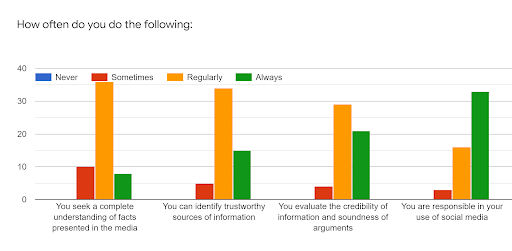By Mary Perry, California State PTA Communications Commission
In the era before internet and social media news, we looked to a limited number of media sources (e.g. newspapers and magazines, TV networks, and radio broadcasts) for the facts and information that helped us understand the world. Right or wrong, for the most part we assumed those media were trustworthy. Or at least we all were familiar with the same basic set of facts.
Young people today cannot make that assumption about their information sources, and neither can we. With hundreds of news sources available online, we as a group rarely share the same understanding of the news or even of basic facts.
Thanks to cellphones, social media channels, and computers, the internet has become a constant part of how we work, how we play, how we connect with other people, and how we get information about the world. The same electronic media have also become a constant part of our children’s lives.
Experts increasingly agree that schools have a role to play in directly teaching young people about how to be literate and responsible consumers of information in this new media world. This blog is the first in a series from California State PTA that will explore how California’s education system and other organizations support teaching media literacy in schools, what more is needed, and how community members can help.
PTA Leaders Say Media Literacy Should Be Part of Schooling
Leaders in the California State PTA Board of Managers who responded to a recent survey were nearly unanimous in saying it’s important for schools to provide specific instruction to students about media literacy and for adults to improve their media literacy as well.
Media Literacy refers to the abilities to access, analyze, evaluate, and communicate various media messages in a variety of forms. To teach those abilities in the classroom, instruction needs to cover a broad set of skills and dispositions. According to a recent research study by Common Sense Education, students should be “learning how to assess the credibility of online sources, understanding how and why media is produced, and reflecting on their responsibilities as thoughtful media creators and consumers.”
In November, 2021, the California State PTA Communications Commission surveyed our state leaders about the topic of media literacy. We received responses from 53 members of the Board of Managers and Board of Directors.
Three-quarters of those who answered said they agreed or strongly agreed with the statement: “Facts, data, and analysis are playing a diminishing role in our political and civic discourse.”
The respondents also reported on the types of media they personally use to get news. More than 80% said they regularly or always get their news from the internet. Compare that to just a third saying the same about print sources and radio, and about 40% saying they regularly or always use TV news and about 40% saying the same about social media.
Acknowledging that this was a small survey and may not be generalizable to the state as a whole, their self-reporting on their own media habits provides some insights into how adults could strengthen their own media use of media and set an example for young people. The options on the survey were based on a project from RAND, called Truth Decay, that includes recommended standards for teaching media literacy.
 |
|
Results of survey completed by CA State PTA Board of Managers, November 2021
Do schools teach media literacy now?
As is true with most questions about curriculum and instruction in California, the first response to that question is “it depends.” School districts, schools, and teachers differ in the importance they put on the topic of media literacy and their capacity to take up this area of instruction. Families also vary in their knowledge and capacity, but they are crucial because of the broad and deep influence they can have on media usage and expectations.
With all of that said, in coming weeks this blog series will provide you with background and some answers to these three broad questions:
- What state policies and expert research guide the teaching of media literacy?
- What resources are available to support schools, classroom teachers, and families in teaching our young people about media literacy?
- What do we know about the extent to which this is happening in California schools and steps we can take to make it stronger?
If you, your family or your school has some answers to the media literacy challenge, or other questions you’d like to pose, drop us a line at communications@capta.org.